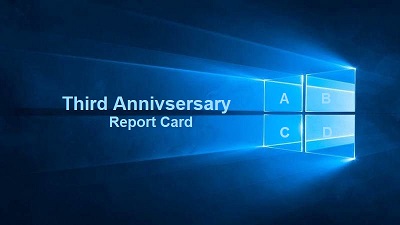As Windows 10 approaches its third birthday, it's maturing steadily. A worldwide installed base of more than 700 million active users is impressive, but what will it take to convince Windows 7 users to switch? Here's my report card. Microsoft released Windows 10 three years ago this month. That three-year anniversary used to be a very big deal for Microsoft's OEM partners and for its corporate customers running Windows, because it signaled the expected arrival of a new Windows version. With Windows 10, that calendar is no longer relevant. Instead of a "big bang" release every three years, Microsoft has been trickling out new features for its flagship desktop operating system, releasing a total of five feature updates in the past three years. The most recent release, the April 2018 Update, might not seem like that big of an upgrade compared to the version that came out a mere six months earlier. But compare it to the original Windows 10 release from July 2015 and the contrast is striking. The Windows 10 you see today is the equivalent of one of those big-bang releases, and perhaps even more impressive because Microsoft's customers have been able to provide real-time feedback as new features have evolved in the intervening three years. Read the full report on OUR FORUM.
